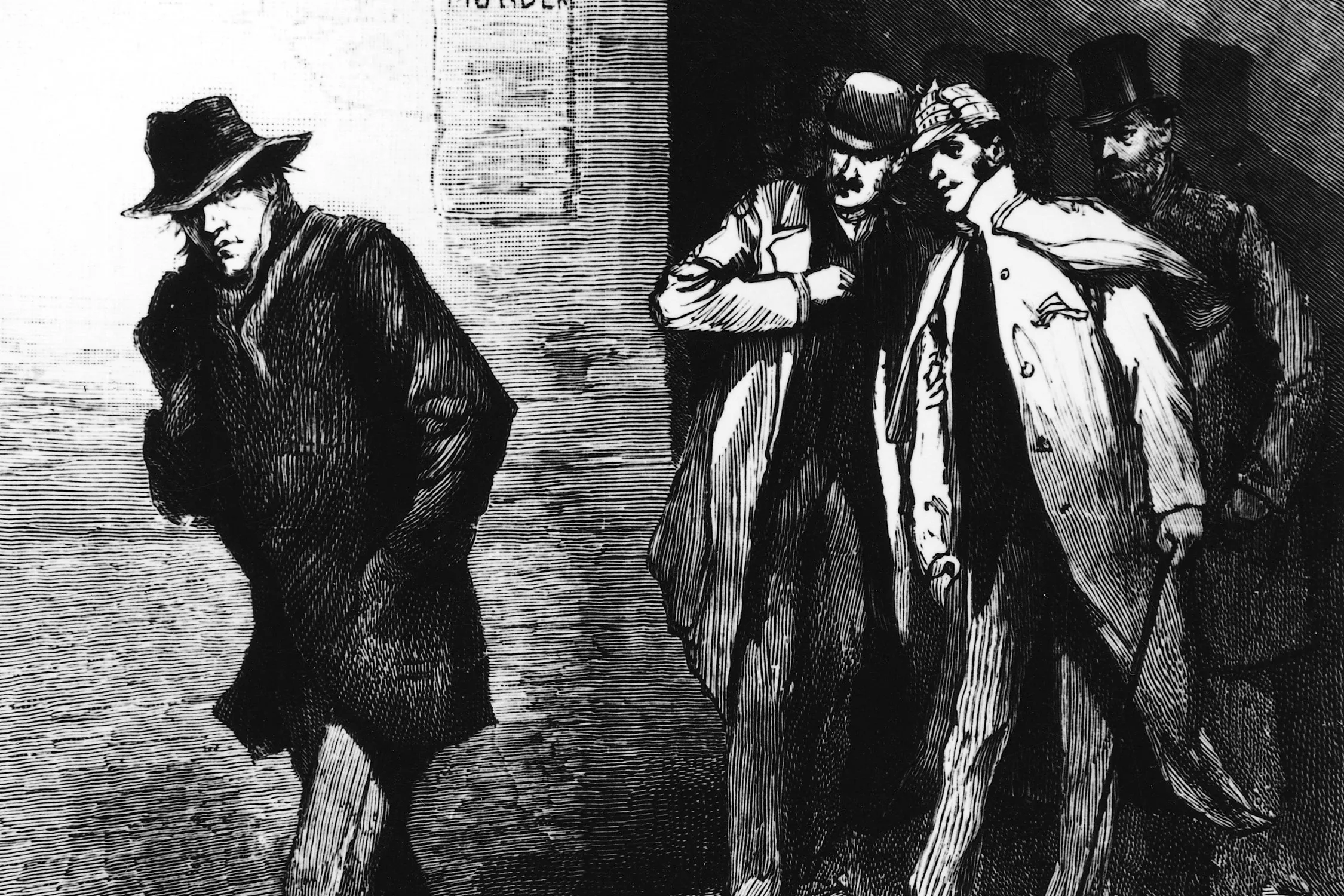Jack the Ripper's Identity Uncovered? DNA Testing Reveals Potential Breakthrough After 130 Years
Quote from Oladosun Joshua Segun on February 10, 2025, 9:52 PM
The story of Jack the Ripper has captivated people for over a century. The unsolved murders in London’s Whitechapel district still spark intrigue, with many theories surrounding the killer’s identity. Recent advancements in DNA testing could finally put these long-held mysteries to rest.
Jack the Ripper is one of history's most notorious serial killers. The gruesome nature of the crimes, coupled with the mystery of his identity, keeps this case alive in public memory. Books, films, and documentaries have analyzed the events, providing various theories and personalities. This ongoing fascination highlights a deeper obsession with understanding evil and the human psyche.
The impact of Jack the Ripper extends beyond horror stories. His actions led to a shift in police procedures and forensic science. The case remains relevant as modern investigators apply new methods to tackle cold cases. Each discovery serves as a reminder of how far we've come in solving crimes.
DNA technology has transformed criminal investigations. In recent years, cold cases have been revisited with new tools, giving hope to families and communities seeking closure. The potential to unmask Jack the Ripper using DNA analysis represents a thrilling possibility.
The Whitechapel murders took place between August and November in 1888. Five women, commonly referred to as the "canonical five," were brutally killed. They include:
- Mary Ann Nichols – August 31, 1888
- Annie Chapman – September 8, 1888
- Elizabeth Stride – September 30, 1888
- Catherine Eddowes – September 30, 1888
- Mary Jane Kelly – November 9, 1888
London’s Metropolitan Police faced several obstacles in their investigation. The lack of forensic science hindered their ability to gather evidence. Relying mostly on witness accounts, they struggled to find reliable leads, leading to a frustrating dead end.
Researchers and descendants of Jack the Ripper’s victims are seeking to finally unmask the notorious killer.
Over 130 years after the serial killer committed numerous gruesome murders in impoverished areas of East London, England, descendants of his victims and Jack the Ripper researchers, including Russell Edwards, are calling on an inquest to formally hold Aaron Kosminski legally responsible for the crimes.
Recent advancements have allowed investigators to analyze items connected to the murders. Possible sources include bloodstains and materials found at the crime scenes. A focus on personal items may reveal the killer’s identity through genetic matches.
As for how Kosminski is being re-linked to the crimes a century later. DNA found on a shawl retrieved from the crime scene of one of the killer’s victims, Catherine Eddowes, matches a DNA sample provided by one of Kosminski’s living relatives, according to findings published in the Journal of Forensic Sciences in 2019.
“It’s very difficult to put into words the elation I felt when I saw the 100 percent DNA match,” Edwards, whose research led to the findings, shared in an interview published Jan. 31. “This brings closure and a form of justice for the descendants.”
Testing DNA from over a century ago presents challenges. Many samples are degraded, making it difficult to obtain reliable results. Researchers must navigate these obstacles carefully to avoid false conclusions.
One of Eddowes’ descendants Karen Miller not only welcomes the findings but is looking for further investigation to make them official.
“We have the proof,” she shared in Jan. 12. “Now we need this inquest to legally name the killer.”
While some experts have questioned the validity of the findings and cautioned against deeming them conclusive. Walther Parson, a forensic scientist at Austria’s Innsbruck Medical University, questioned the journal’s omission of genetic sequences belonging to Eddowes and Kosminski’s living relatives, which were replaced in the paper by a graphic indicating the alleged connection between the shawl and the modern DNA sequences.
“Otherwise,” he also shared in 2019 when the journal was first published, “the reader cannot judge the result.”
To ensure credibility, any findings must undergo rigorous peer review. Experts will analyze the data before anything is accepted as fact. This step is crucial to maintain scientific integrity and the public’s trust.
Once DNA is extracted, it will likely be compared to genealogical databases. Such comparisons can provide leads to potential relatives of the Ripper, illuminating the mystery in new ways.
While DNA findings can point to a suspect, they won't offer full proof without additional evidence. For a concrete conclusion, investigators will seek more insight into the suspect's life, habits, and whereabouts during the murders.
Hansi Weissensteiner, a scientist at Austria’s Innsbruck Medical University, also argued that the DNA studied can only rule culprits out rather than conclusively identifying one.
“Based on mitochondrial DNA,” he told the outlets, “One can only exclude a suspect.” A legal team hired by Edwards is preparing to call for an inquest into the matter.
One significant concern in historical DNA testing is contamination. Rigorously maintaining a clean testing environment is essential to avoid misleading results. Ensuring that scientists are unbiased in their approach is also vital for valid conclusions.
Revealing Jack, the Ripper's identity may reshape how we understand criminal psychology and police work from that era. The case has been studied extensively; new revelations could lead to fresh interpretations of historical events.
Bringing closure to the families of the victims remains a poignant issue. Knowing the identity of the killer could provide solace that justice was never served. Public sentiment may shift, leading to renewed discussions about crime and punishment.
This breakthrough could offer lessons for modern solving techniques. Law enforcement agencies might adopt similar approaches for other cold cases, maximizing the effectiveness of historical evidence.
The realm of forensic science continues to evolve. New techniques and machines are changing how investigators approach old cases. They now have tools that were inconceivable a few decades ago, allowing for greater accuracy and efficiency.
Using modern techniques on historical cases raises ethical questions. Respecting the victims and their families is paramount. Investigators must balance uncovering the past with sensitivity to those affected.
Keeping the public informed throughout these investigations is crucial. Transparency about methods and findings helps maintain trust in the investigative process, especially regarding high-profile cases.
As DNA analysis progresses, we may soon learn the identity of Jack the Ripper. Key findings from DNA testing could reveal new insights and make us rethink the legacy of this gruesome chapter in history.
Maintaining public trust is vital, especially as we delve into complex issues surrounding justice and crime. The story of Jack the Ripper endures, reminding us of humanity’s darker sides and the relentless pursuit of justice.

The story of Jack the Ripper has captivated people for over a century. The unsolved murders in London’s Whitechapel district still spark intrigue, with many theories surrounding the killer’s identity. Recent advancements in DNA testing could finally put these long-held mysteries to rest.
Jack the Ripper is one of history's most notorious serial killers. The gruesome nature of the crimes, coupled with the mystery of his identity, keeps this case alive in public memory. Books, films, and documentaries have analyzed the events, providing various theories and personalities. This ongoing fascination highlights a deeper obsession with understanding evil and the human psyche.
The impact of Jack the Ripper extends beyond horror stories. His actions led to a shift in police procedures and forensic science. The case remains relevant as modern investigators apply new methods to tackle cold cases. Each discovery serves as a reminder of how far we've come in solving crimes.
Register for Tekedia Mini-MBA edition 19 (Feb 9 – May 2, 2026): big discounts for early bird.
Tekedia AI in Business Masterclass opens registrations.
Join Tekedia Capital Syndicate and co-invest in great global startups.
Register for Tekedia AI Lab: From Technical Design to Deployment (next edition begins Jan 24 2026).
DNA technology has transformed criminal investigations. In recent years, cold cases have been revisited with new tools, giving hope to families and communities seeking closure. The potential to unmask Jack the Ripper using DNA analysis represents a thrilling possibility.

The Whitechapel murders took place between August and November in 1888. Five women, commonly referred to as the "canonical five," were brutally killed. They include:
- Mary Ann Nichols – August 31, 1888
- Annie Chapman – September 8, 1888
- Elizabeth Stride – September 30, 1888
- Catherine Eddowes – September 30, 1888
- Mary Jane Kelly – November 9, 1888
London’s Metropolitan Police faced several obstacles in their investigation. The lack of forensic science hindered their ability to gather evidence. Relying mostly on witness accounts, they struggled to find reliable leads, leading to a frustrating dead end.
Researchers and descendants of Jack the Ripper’s victims are seeking to finally unmask the notorious killer.
Over 130 years after the serial killer committed numerous gruesome murders in impoverished areas of East London, England, descendants of his victims and Jack the Ripper researchers, including Russell Edwards, are calling on an inquest to formally hold Aaron Kosminski legally responsible for the crimes.
Recent advancements have allowed investigators to analyze items connected to the murders. Possible sources include bloodstains and materials found at the crime scenes. A focus on personal items may reveal the killer’s identity through genetic matches.
As for how Kosminski is being re-linked to the crimes a century later. DNA found on a shawl retrieved from the crime scene of one of the killer’s victims, Catherine Eddowes, matches a DNA sample provided by one of Kosminski’s living relatives, according to findings published in the Journal of Forensic Sciences in 2019.

“It’s very difficult to put into words the elation I felt when I saw the 100 percent DNA match,” Edwards, whose research led to the findings, shared in an interview published Jan. 31. “This brings closure and a form of justice for the descendants.”
Testing DNA from over a century ago presents challenges. Many samples are degraded, making it difficult to obtain reliable results. Researchers must navigate these obstacles carefully to avoid false conclusions.
One of Eddowes’ descendants Karen Miller not only welcomes the findings but is looking for further investigation to make them official.
“We have the proof,” she shared in Jan. 12. “Now we need this inquest to legally name the killer.”
While some experts have questioned the validity of the findings and cautioned against deeming them conclusive. Walther Parson, a forensic scientist at Austria’s Innsbruck Medical University, questioned the journal’s omission of genetic sequences belonging to Eddowes and Kosminski’s living relatives, which were replaced in the paper by a graphic indicating the alleged connection between the shawl and the modern DNA sequences.

“Otherwise,” he also shared in 2019 when the journal was first published, “the reader cannot judge the result.”
To ensure credibility, any findings must undergo rigorous peer review. Experts will analyze the data before anything is accepted as fact. This step is crucial to maintain scientific integrity and the public’s trust.
Once DNA is extracted, it will likely be compared to genealogical databases. Such comparisons can provide leads to potential relatives of the Ripper, illuminating the mystery in new ways.
While DNA findings can point to a suspect, they won't offer full proof without additional evidence. For a concrete conclusion, investigators will seek more insight into the suspect's life, habits, and whereabouts during the murders.

Hansi Weissensteiner, a scientist at Austria’s Innsbruck Medical University, also argued that the DNA studied can only rule culprits out rather than conclusively identifying one.
“Based on mitochondrial DNA,” he told the outlets, “One can only exclude a suspect.” A legal team hired by Edwards is preparing to call for an inquest into the matter.
One significant concern in historical DNA testing is contamination. Rigorously maintaining a clean testing environment is essential to avoid misleading results. Ensuring that scientists are unbiased in their approach is also vital for valid conclusions.
Revealing Jack, the Ripper's identity may reshape how we understand criminal psychology and police work from that era. The case has been studied extensively; new revelations could lead to fresh interpretations of historical events.
Bringing closure to the families of the victims remains a poignant issue. Knowing the identity of the killer could provide solace that justice was never served. Public sentiment may shift, leading to renewed discussions about crime and punishment.
This breakthrough could offer lessons for modern solving techniques. Law enforcement agencies might adopt similar approaches for other cold cases, maximizing the effectiveness of historical evidence.

The realm of forensic science continues to evolve. New techniques and machines are changing how investigators approach old cases. They now have tools that were inconceivable a few decades ago, allowing for greater accuracy and efficiency.
Using modern techniques on historical cases raises ethical questions. Respecting the victims and their families is paramount. Investigators must balance uncovering the past with sensitivity to those affected.
Keeping the public informed throughout these investigations is crucial. Transparency about methods and findings helps maintain trust in the investigative process, especially regarding high-profile cases.
As DNA analysis progresses, we may soon learn the identity of Jack the Ripper. Key findings from DNA testing could reveal new insights and make us rethink the legacy of this gruesome chapter in history.
Maintaining public trust is vital, especially as we delve into complex issues surrounding justice and crime. The story of Jack the Ripper endures, reminding us of humanity’s darker sides and the relentless pursuit of justice.
Uploaded files:Share this:
- Click to share on Facebook (Opens in new window) Facebook
- Click to share on X (Opens in new window) X
- Click to share on WhatsApp (Opens in new window) WhatsApp
- Click to share on LinkedIn (Opens in new window) LinkedIn
- Click to email a link to a friend (Opens in new window) Email
- Click to print (Opens in new window) Print



